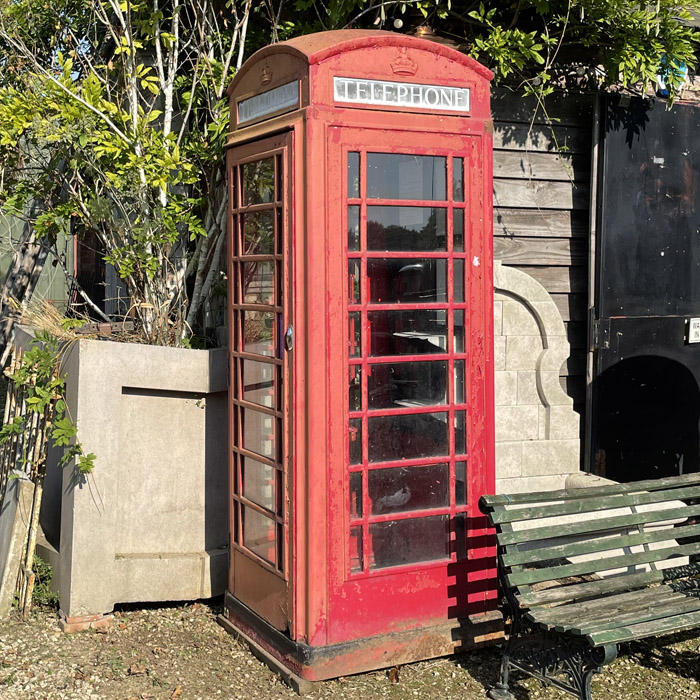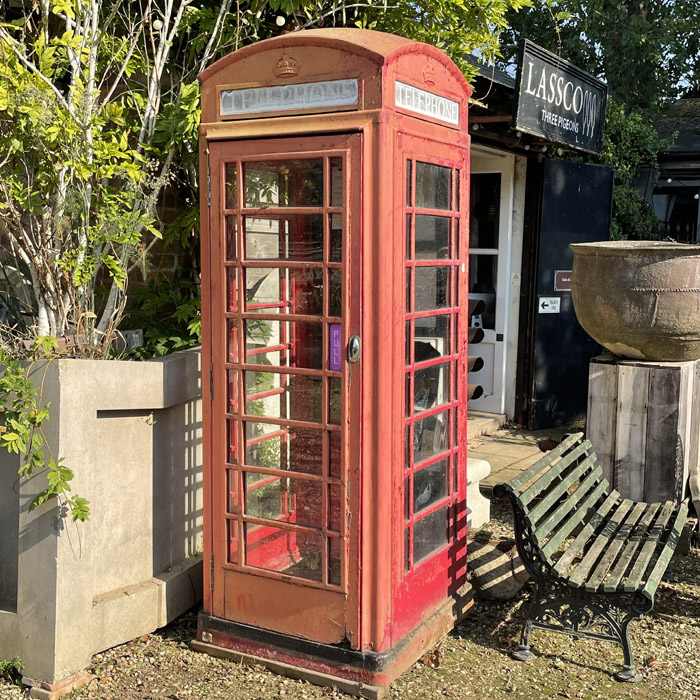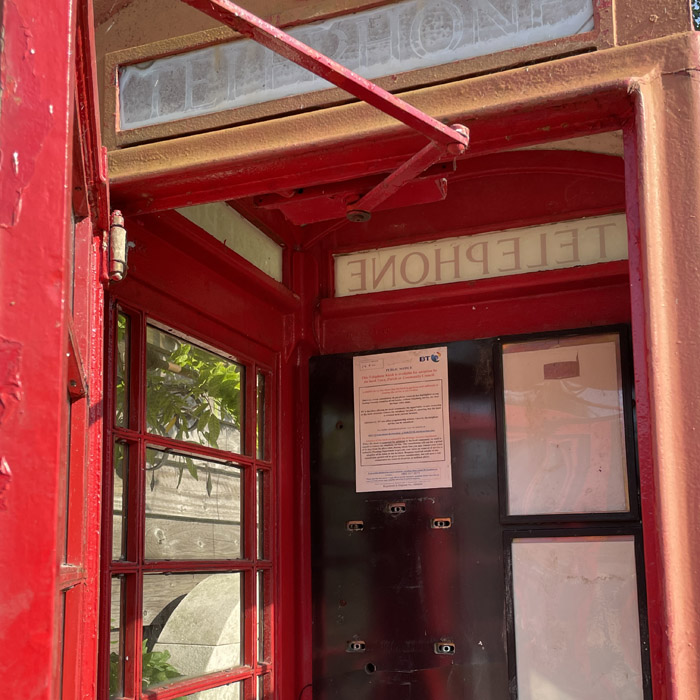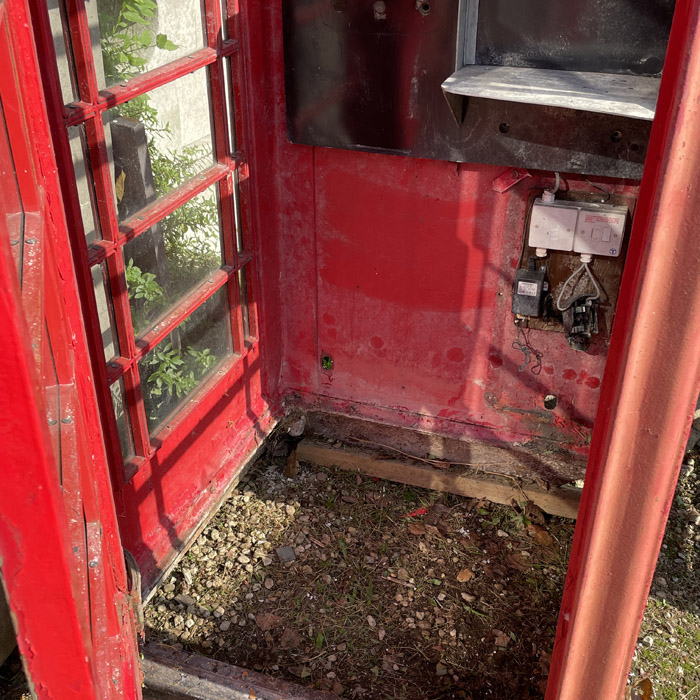Archived Stock - This item is no longer available
A British “K6” cast iron telephone box
the domed top above the frieze pierced with glazed panels to three sides bearing the "TELEPHONE" sign, three of the sides, including the wooden-framed door, incorporating laterally glazed panels,
SOLD OUT
Out of stock
The iconic red telephone box is symbolic the world over as a quirky and original emblem of British engineering, inventiveness and quirkiness. It is known that Gilbert Scott took the domed roof profile from Sir John Soane – a revered architect from over a century previous. Soane’s Bank of England was being tragically demolished when Gilbert Scott designed the K6 – at the time to commemorate the accession of George V.
This particular example is in “Street” condition: peeling paint, a restored crack to the back-panel, the door (timber as is usual, operational but with damage to the bottom rail), telephone gear removed but shelf and back panels extant.




